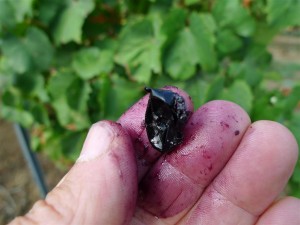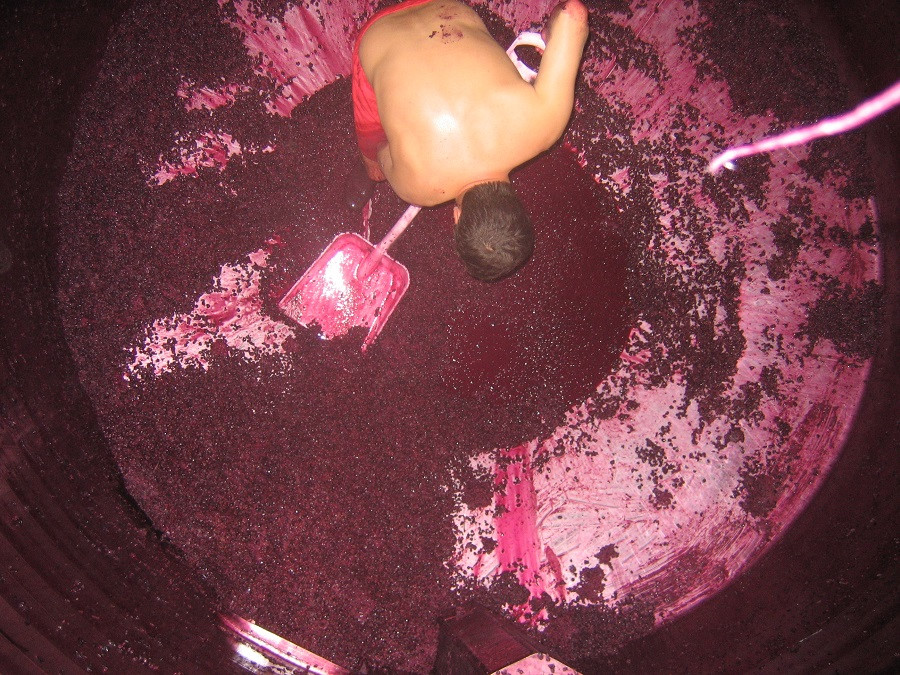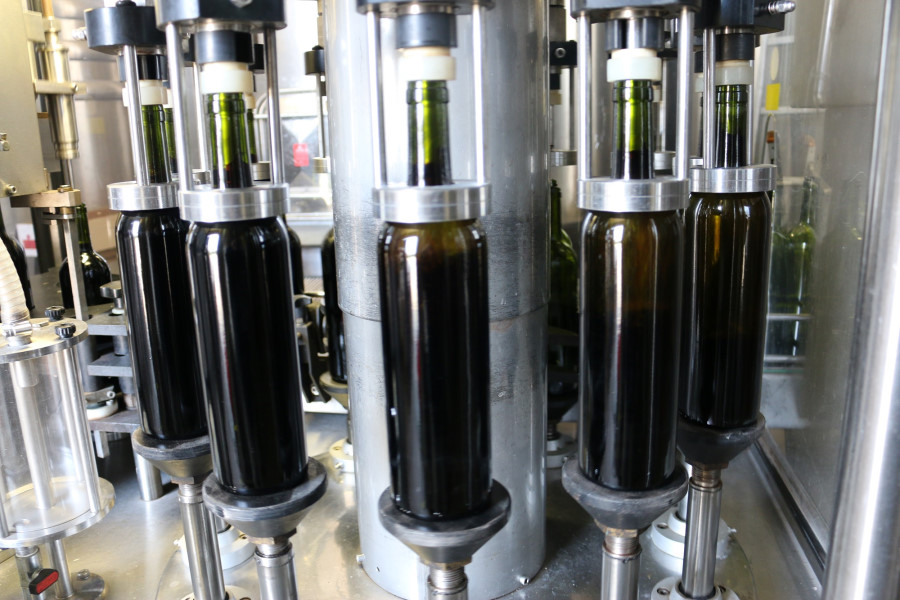Vinification en rouge
Le malbec, le plus précoce des cépages rouges, atteint sa maturité vers le 15 / 20 septembre, suivi de près par le merlot. Le cabernet sauvignon est le plus tardif, il faut patienter jusqu'à début octobre pour qu'il exprime pleinement son potentiel et sa finesse.
Le but de la vinification en rouge est d'extraire la fraction intéressante des composés phénoliques (tanins et anthocyanes) et des arômes présents dans la pellicule des baies. Les raisins sont égrappés et encuvés. Couleur et arômes commencent à apparaître durant la phase préfermentaire.

Ensuite, les levures de fermentation transforment le sucre en alcool, en dégageant de la chaleur. C'est au cours de la fermentation, sous l'action conjuguée de la chaleur et de l'alcool, que sont extraits les tanins. Nous maintenons la température en dessous de 26/28 °C : au-delà, le risque serait d'extraire des tanins astringents et de perdre des arômes.
Tout au long de la cuvaison, des remontages sont réalisés sur chaque cuve au moins deux fois par jour, intensément au début, puis modérément à partir de la mi-fermentation, afin de favoriser l'extraction par renouvellement du jus en contact avec les peaux.
La dégustation régulière de chaque cuve va progressivement révéler le caractère et le potentiel de chacune, et orienter les décisions du vinificateur. En particulier, lorsque l'extraction est jugée optimale (au bout de 20 à 30 jours de cuvaison), nous procédons à l'écoulage : le vin nouveau est séparé du marc. Un pressurage doux du marc donne le vin de presse qui sera traité à part.

La fermentation malolactique stabilise le vin, qui est alors biologiquement terminé.
L'élevage commence alors, les soutirages successifs clarifient le vin et l'affinent progressivement.
L'assemblage des différents lots est une décision importante qui détermine le caractère final du vin, son style.
Au bout de 12 à 18 mois, après clarification et stabilisation, le vin est mis en bouteilles à la propriété.

![]()
Paiement sécurisé par Carte Bancaire
E-Transactions Crédit Agricole
![]()
Livraison gratuite en France métropolitaine
dès 12 bouteilles commandées
![]()
Commandes expédiées depuis le domaine
par le vigneron : du vrai direct propriété !